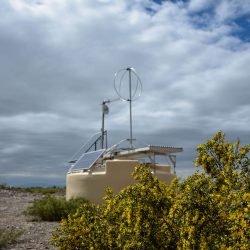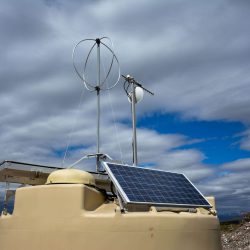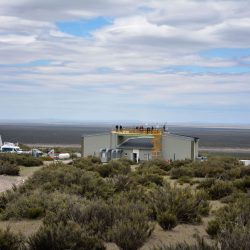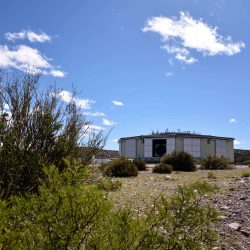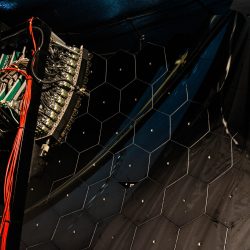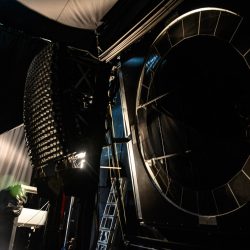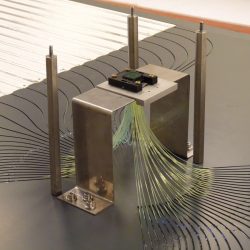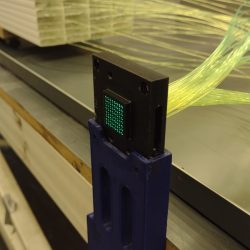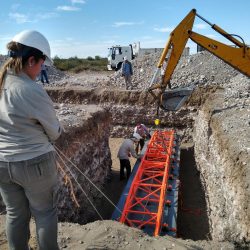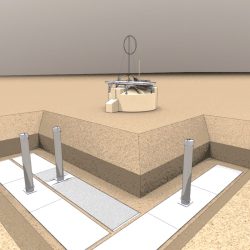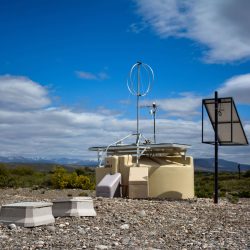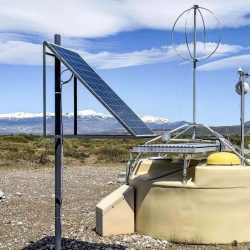
Pierre Auger Observatory
The Pierre Auger Cosmic Ray Observatory is located in Malargüe, in the south of the province of Mendoza, Argentina. It is an international initiative that seeks to determine the origin and identity of cosmic rays, allowing us to advance in understanding our universe.
It was built by a collaboration of 18 countries with the participation of 500 scientists from 90 institutions, and has been operating uninterruptedly since 2004. ITeDA has been involved in this project since its inception, with the active participation of scientific groups and technical and engineering support.
Official website: auger.org.ar
What are cosmic rays?
Subatomic particles that arrive on Earth from outer space, whose origin is still not precisely known. They are believed to be predominantly protons and other atomic nuclei that carry enormous energies. They are often called “space messengers” as they contain information about the processes occurring in the astronomical objects where they are accelerated.
These astroparticles impact the Earth’s atmosphere, generating cascades —or showers— of billions of secondary particles. The higher the energy of the primary particle, the less frequently it arrives, with rates as low as a few particles per square kilometer per century. Therefore, it is necessary to have detector systems spread over large areas so that the detection of these particles can be carried out in “relatively short times.”
What does the Pierre Auger Observatory study?
This observatory is the largest in the world for the study of cosmic rays. The main array consists of an hexagonal grid of 1,660 surface detectors spaced 1.5 km apart, covering a total area of 3,000 km2. Around the main array are 27 fluorescence telescopes located in four buildings. On clear, moonless nights, these telescopes scan the sky to observe the faint ultraviolet light produced by particle showers as they pass through the atmosphere.
AMIGA Project
The AMIGA (Auger Muons and Infill for the Ground Array) project is an extension of the Pierre Auger Observatory. Its main objective is to expand the Observatory’s energy detection range by more than an order of magnitude, reaching energies up to 1016.8 eV.
The detection system for this project was entirely developed in Argentina by ITeDA. It consists of underground detectors designed to directly measure muons, which are elementary particles with great penetrating power. These measurements can help us better understand the nature of cosmic rays by studying in detail the so-called “transition zone” between 1016.8 eV and 1019 eV, where the transition from galactic to extragalactic cosmic ray sources is believed to occur.
What is AMIGA?
This project detection system consists of an infill of 85 pairs of surface detectors and buried detectors, forming two hexagonal arrays. Of these pairs, 61 are separated by 750 meters and 24 by 433 meters. The buried detectors are made up of three muon counters, each consisting of 64 plastic scintillators, a multi-pixel light sensor (SiPM), and data acquisition electronics. These counters work together with the surface detectors, which detect Cherenkov radiation in water produced by particle showers.
The muon counters are buried approximately 2.3 meters underground, allowing only the muon component of the particle showers to be detected. This setup filters out other less penetrating particles, providing an accurate measurement of the muon component—an essential feature for understanding the nature of cosmic rays within the energy range of interest.
AUGER PRIME
Pierre Auger Observatory Upgrade Project
In recent years, the Observatory team has worked hard to upgrade, install and commission new systems for the surface detectors. This included replacing all the electronics and the solar panels with more efficient and higher-power ones. Two new detection systems were incorporated into each surface detector: a scintillator on the top and a radio antenna. A small phototube was also installed inside each surface detector, expanding its dynamic range.
The AMIGA muon detectors have been included in AugerPrime, as they are another of the new detection systems added to the Observatory’s basic design.



